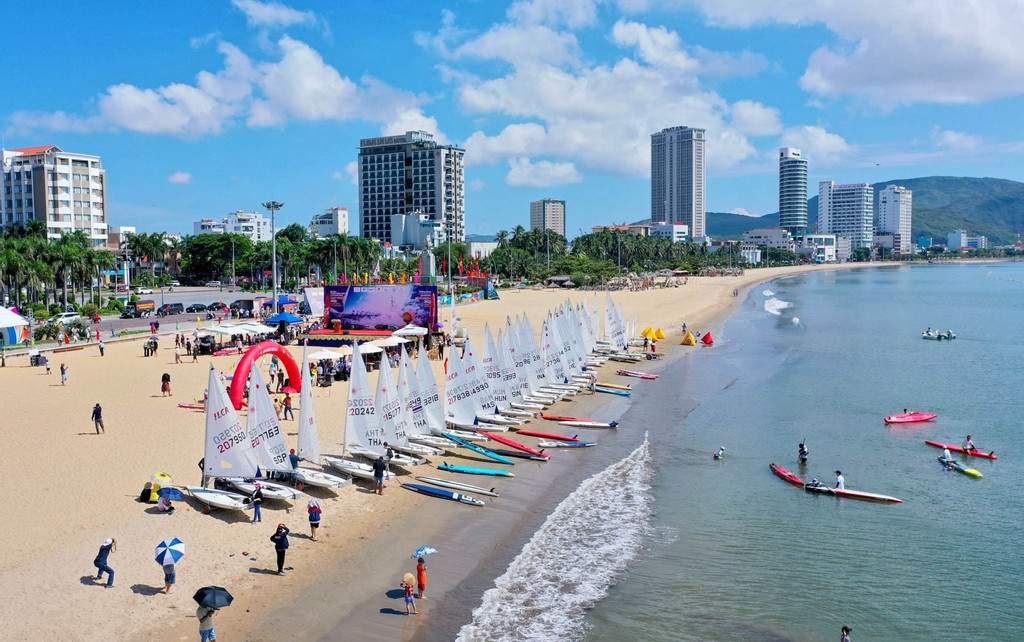
VietNamNet held a roundtable talk with Ha Van Sieu, deputy head of the Vietnam National Authority of Vietnam, Dang Bao Hieu, chair of Ana Marina Nha Trang Resort, and Tran Viet Anh, president of Binh Dinh F1 to discuss how to position Vietnam as a wonderful destination for beach tourism.
Phu Quoc is a locality with advantageous natural conditions and infrastructure that can attract tourists. It has an airport, hotel system and seaport, and has organized many international events. However, its tourism has declined recently with the number of travelers decreasing sharply in the last six months. What would you say about that?
Ha Van Sieu: Phu Quoc has been positioned as a destination of international stature. This is a very important mission. However, Phu Quoc has suffered too heavily, perhaps most heavily among localities, from Covid-19. The path of recovering the island from Covid-19 is very challenging.
In such conditions, to speed up the recovery and gear up for development, the local authorities need to take actions, while businesses need to be unanimous to cooperate with each other to reach that end.
Tran Viet Anh: The stories about Phu Quoc and the tourism development in other localities are lessons for businesses and policymakers to learn from. The localities once witnessed strong growth in certain periods, but growth was slow later. The same situation is happening with Phu Quoc.
Phu Quoc is the typical example of an unreasonable investment structure, with overly high focus on real estate projects. Meanwhile, the sea-borne economy and sports economy don’t get appropriate attention.
When Covid-19 was contained, the number of domestic travelers increased sharply in localities. At that moment, provinces’ leaders believed that the tourism recovery had begun. But this is just a superficial and temporary phenomenon. In fact, the impact from the pandemic is significant. Once the national economy is in recession and people have to tighten their purse strings, they will prioritize spending money on food and essential needs, rather than tourism.
At that moment, I met a lot of businesses and local state officials on Phu Quoc and realized that they have a firm belief about tourism recovery. But I believe that it is too early to be sure about this.
When difficulties rush down, as Sieu said, local authorities need to become pioneers, while businesses must be the companions. The local government needs to use local budget to support businesses, especially in communications campaigns, because businesses have suffered too heavily from the pandemic, and don’t have money for the campaigns.
The second problem is that when facing difficulties and lower number of travelers, businesses think of cutting services. I found that many luxury resorts, which only served high-end guests in the past, now have to cut service fees to lure more guests. High-end travelers will be unsatisfied if they have to stay in the same places with lower-end travelers.
When resorts and hotels have to cut service fees, they will provide lower-quality services and lay off workers. This is occurring in Phu Quoc, because travelers don’t want to come back.
There’s another problem that airfares to Phu Quoc are too high.
Dang Bao Hieu: Phu Quoc was praised as the ‘tourism paradise’ of sustainable tourism with wonderful natural conditions, temperate climate, fine white sand, coconut groves and diverse primeval landscapes on land and sea.
However, it seems that Phu Quoc tourism has lost its balance because of misunderstanding about sea tourism development. Investors come to Phu Quoc just to seek investment opportunities in land.
Phu Quoc did not make hectic preparations for tourism development. When tourists began to flock there, the island became overloaded and faced problems in providing necessary things for local tourism activities. One of the problems is waste treatment.
The other problem is the nonsensical architecture. There are many construction works that don’t fit Phu Quoc’s characteristics. The works with North European and Mediterranean symbols appear everywhere. I don’t think travelers come to PhuQuoc to see buildings with imitative architecture.
In tourism, indigenous culture is a core element. What do you think local authorities need to do to preserve the culture and serve the development of tourism and sea tourism?
Ha Van Sieu: Local authorities need to understand that it is locals who are the owners of destinations. They need to be given the right to participate in the process of policy making and development. Localities can attract investments from outside, but they should appreciate local investors as well.
Tran Viet Anh: We must respect the voice, identity, customs and traditions of local people. Tourists do not want to come to Vietnam to see buildings with Mediterranean style. What they expect to see is the wild, unique beauty of local land.
VietNamNet